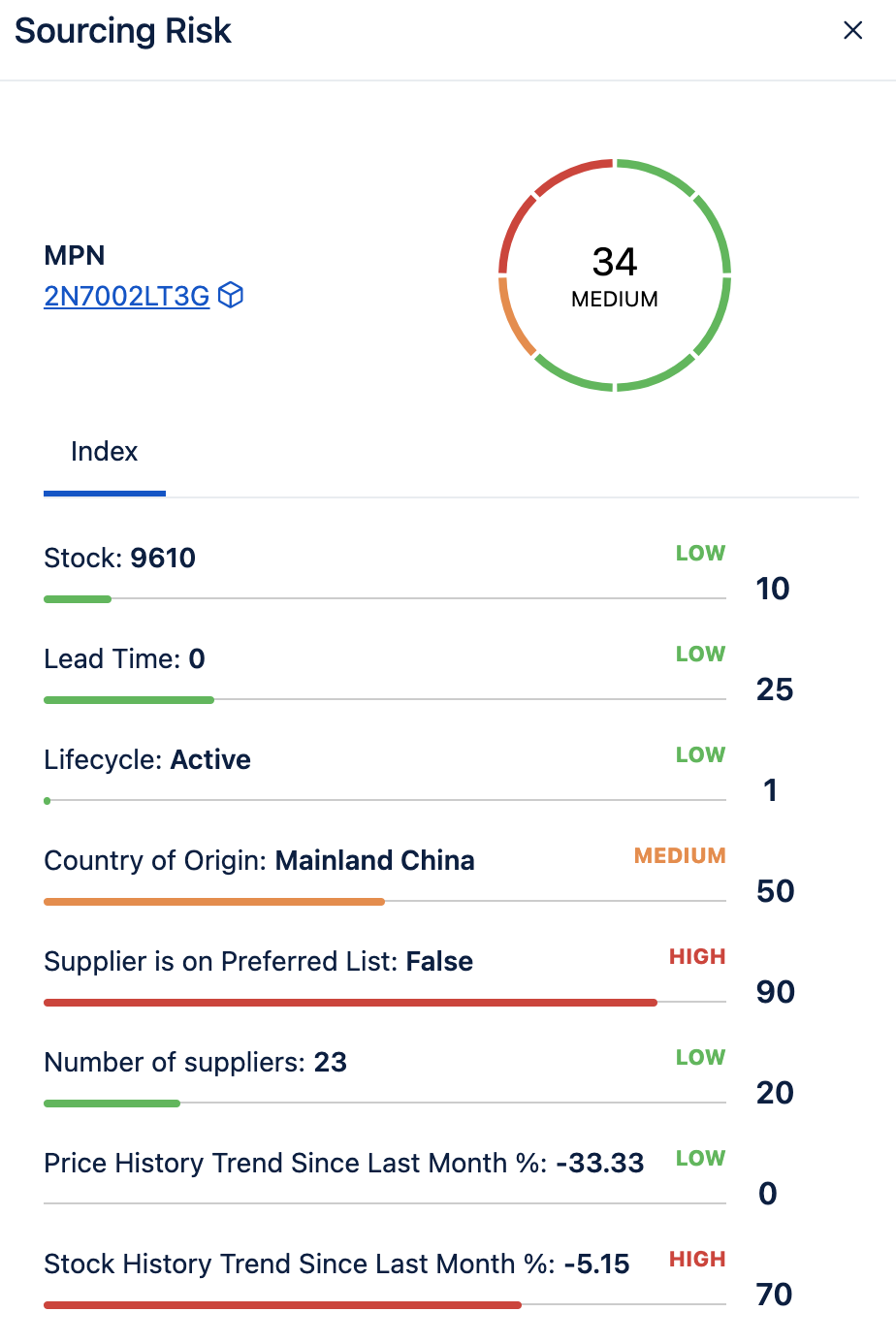In today's complex supply chain landscape, effectively managing risk around sourcing decisions is more critical than ever. Utilizing specialized tools can provide organizations with enhanced visibility into potential vulnerabilities, allowing them to proactively identify and mitigate risks associated with supplier reliability, geopolitical instability, and market fluctuations. These tools enable data-driven decision-making by offering insights into supplier performance and market trends, ultimately fostering resilience and agility. By adopting a systematic approach to risk management, companies can not only safeguard their operations but also seize opportunities for innovation and growth in an increasingly unpredictable environment.
Here is an example of a Risk Index you can create to help evaluate sourcing decisions. Check out the article linked below for more information on how to create a new Risk Index:

Price History Trend Since Last Month %
| Condition |
Risk |
| Price History Trend Since Last Month % < 0 |
0 |
| Price History Trend Since Last Month % > 0 |
70
|
Stock History Trend Since Last Month %
| Condition |
Risk |
| Stock History Trend Since Last Month % < 0 |
70 |
| Stock History Trend Since Last Month % > 0 |
0 |
Supplier is on Preferred List
| Condition |
Risk |
| Supplier is on Preferred List = True |
10 |
| Supplier is on Preferred List = False |
90 |
Number of suppliers
| Condition |
Risk |
| Number of suppliers = 0 OR Number of suppliers <= 1 |
90 |
| Number of suppliers > 1 |
20 |
Stock
| Condition |
Risk |
| Stock = 0 (Overwrite) |
100 |
| Stock > 0 AND Stock < 10 |
70 |
| Stock >= 10 |
10 |
Lead Time (weeks)
| Condition |
Risk |
| Lead Time > 12 |
75 |
| Lead Time <= 12 |
25 |
| Lead Time = 0 |
50 |
Lifecycle
| Condition |
Risk |
| Lifecycle = Obsolete OR Lifecycle = End Of Life OR Lifecycle = Not Recommended OR Lifecycle = Lifetime Buy (Overwrite) |
100 |
| Lifecycle = Active |
1 |
Country of Origin
| Condition |
Risk |
| No Data |
30 |
| Country of Origin = |
Specific countries and their associated risk can be set according to your individual needs |